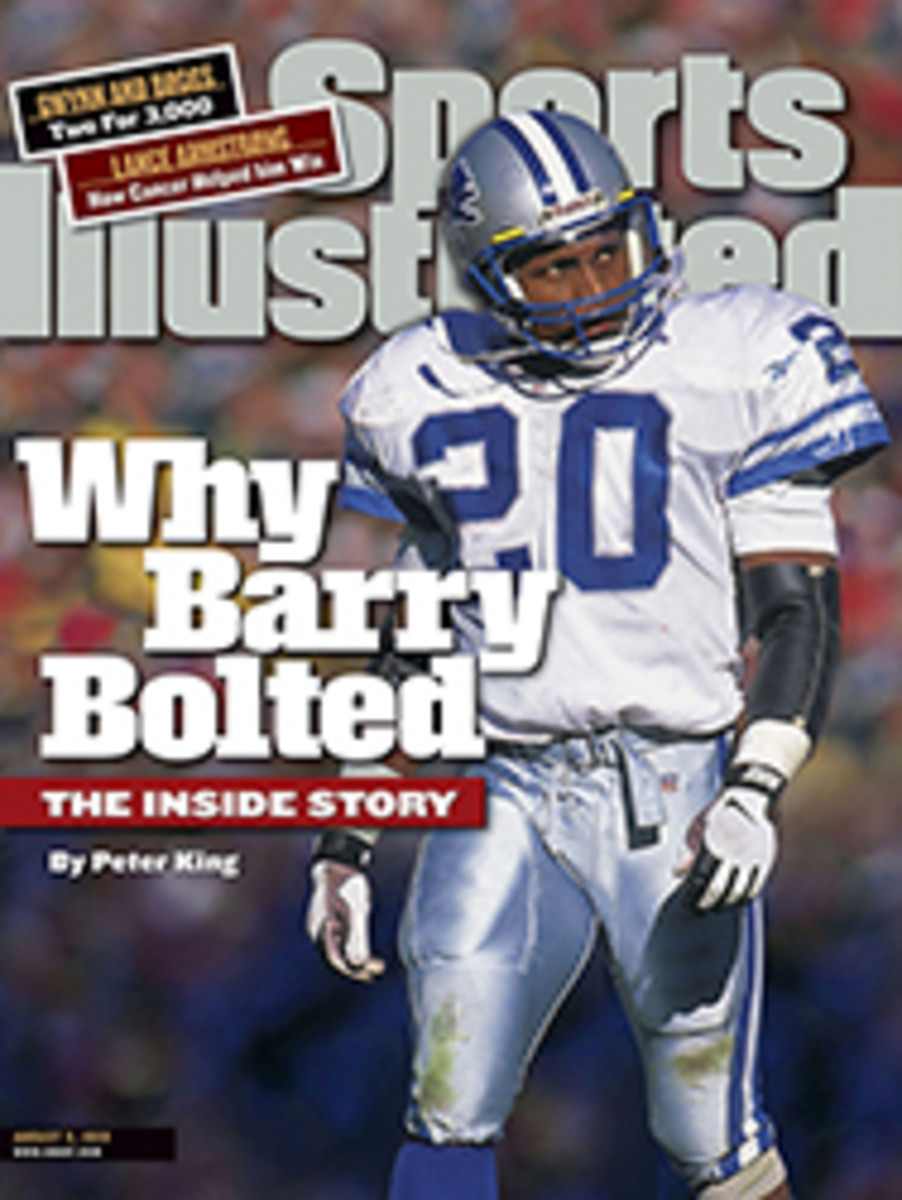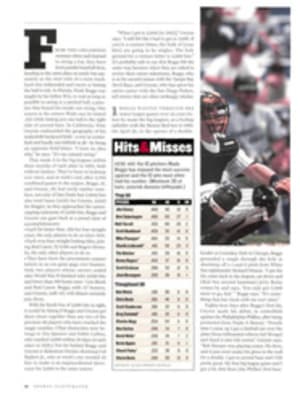
Team Of The Century One man's ballot for baseball's best starting nine
Picking an All-Century baseball team isn't the most imaginative
use of anyone's time, but it's hard to resist. Even if the
current Major League Baseball balloting is a shameless scam
designed to give MasterCard your E-mail address, the temptation
persists.
But when it came time to do my ballot, I decided to follow
certain principles. I believe in the doctrine of one man, one
position: I'm picking only a starting nine (Major League
Baseball's ballot provides berths for 25 players), and each
outfield position is a separate category; no spreading three
centerfielders across the grass. Now, let's play ball.
Pitcher: For some inexplicable reason, the greatest pitcher in
history doesn't even make many top five lists. In one
three-season stretch, Lefty Grove won 79 games and lost 15. Four
times (including 1939, when he was 39 years old), his ERA was
more than two runs lower than the American League average. He
won the ERA championship nine times; no other pitcher has done
it more than five times.
Catcher: Johnny Bench, by an arm, over Yogi Berra. Berra was the
better overall offensive player, but Bench's defensive skills
more than made up for whatever deficiencies he had at the
plate--such as hitting only 389 career home runs, including the
most of any catcher in history (327).
First base: Poor Hank Greenberg, who played in the American
League at the same time as Jimmie Foxx. And poor Jimmie Foxx,
who played in the American League at the same time as Lou
Gehrig. Greenberg and Foxx were Garciaparra and Jeter to
Gehrig's Alex Rodriguez.
Second base: Joe Morgan is not the only man to have led his
league in both slugging percentage and walks, but he's certainly
the only one to do both while playing the best second base of
his generation. His stolen base percentage of .810 compares
favorably with Lou Brock's and Rickey Henderson's.
Shortstop: Honus Wagner was the National League's best player,
challenged only by Cobb as the game's best, during the first
dozen or so years of this century. He led the league in batting
eight times and slugging percentage six times. At no other
position is one player so dominant. Some might say that a lineup
like this one could afford to have a great glove at short--say,
Ozzie Smith. But a lineup like this one could afford to have
Adam Sandler at short.
Third base: Mike Schmidt by a hair, over Eddie Mathews, George
Brett and Brooks Robinson. Oddly, until the last 20 years or so,
the inevitable name at third was Pie Traynor, who wasn't a match
for any of these four. Then we came to the Periclean Age of
third basemen. Schmidt was a sleek and powerful blend of
Robinson and Mathews, golden of glove and silver at bat,
including 13 seasons out of 14 in which he hit more than 30 home
runs. Not even Henry Aaron did that.
Rightfield: Nor did Aaron, great player that he was, supplant
the one indisputable choice on any All-Century team: Babe Ruth.
Centerfield: Willie Mays. Mickey Mantle at his best was better,
but Mays did it longer, and Joe DiMaggio didn't do quite as much
as either.
Leftfield: Ted Williams hit as well as anyone who ever played,
but he was a statue in the outfield, a turtle on the base paths
and a sorehead in the clubhouse. Stan Musial was a better
all-around player, and as a hitter he ranks in the top 10 in
doubles, extra-base hits, RBIs, runs and walks. If you include
walks and stolen bases, Williams accumulated 6,927 total bases
in his career; Musial had 7,811.
Using that measurement, I'll pick a man who had 7,437 total
bases through Sunday and was still going strong: Rickey
Henderson. We all know he's the best leadoff hitter and base
stealer in history. He also possesses alarming power for a
leadoff man; he has more career home runs than such Hall of
Famers as Hack Wilson, Joe Medwick, Bill Dickey and Bill Terry.
But the jaw-dropping thing about Henderson is what a great glove
man he was in his prime. In '81 he led American League
outfielders in putouts, which is extremely rare since that
distinction usually goes to a centerfielder. Pretty consistently
in those years, he had half a chance per game more than the
league's average leftfielder. Which meant, once you factor in
errors, that over the course of a season about 75 balls that
would have dropped in for hits against other teams were
transformed into outs by Henderson. Think about it.
Just don't threaten my family, okay?
B/W PHOTO: NATIONAL BASEBALL LIBRARY Grove was the ace of aces.

